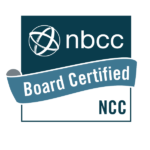When PTSD is triggered, it can be hard to keep emotions under control. PTSD symptoms can be brutal on the human body and wreak havoc on the mind. While it takes practice and patience, those who deal with PTSD can help themselves by practicing self-regulation skills.
So, what exactly is self-regulation? It refers to our ability to manage extreme emotions, sensations, or thoughts. For people with PTSD, these feelings lead to reactions that can worsen PTSD symptoms. Self-regulation skills help those who experience painful flashbacks from past trauma learn to calm themselves down. One useful self-regulation skill is called Progressive Muscle Relaxtion(PMR). If you experience symptoms from PTSD, keep reading to find out how this can help you during times of stress.
Progressive Muscle Relaxation (PMR)
The name seems more complicated than it actually is. Progressive Muscle Relaxation (PMR) is an exercise that anyone can do. It is a relaxation technique that is highly effective in moments of stress and even during a panic attack.
PMR was developed in the 1920’s by Edmund Jacobson, an American physician. He discovered that by tightening and relaxing groups of muscles, his patients were able to let go of the tensions in their bodies.
PMR works by trying to reverse our bodies’ natural response to stress – the flight-or-fight response. The human body developed this response as a way to either run from a threat or face it head-on.
Some common symptoms of someone experiencing PTSD are muscle pain, tension, and stiffness. PMR is an effective way to calm yourself down when you find yourself going through a panic attack or a highly stressful moment.
PMR helps your body relax by lowering your heart rate, relaxing your mind, and releasing tension in your body.
You Can Practice PMR Anywhere, Anytime
What’s great about PMR is that it can be practiced anywhere at any time. This is especially useful if you find yourself in a situation where your PTSD symptoms are being triggered.
Like most things in life, it takes practice in order to master this self-regulation skill. We recommend that, in order for it to be most effective for you in stressful situations, you learn how to do it when you aren’t under a lot of stress or pressure.
A Quick Guide To PMR
To practice PMR on your own, follow these steps when you feel nervous but not in a triggering environment.
- Try to get as comfortable as you can.
- Breathe: Take one deep breath, then slowly exhale. Repeat this three to five times. Feel how your stomach slowly rises as you breathe in.
- Starting at your feet, tighten your muscles for a few breaths then exhale as you release them
- Continue this method working from the bottom up – focusing on your feet, legs, stomach, arms, shoulders, and neck.
As you work through each muscle group, you should feel a noticeable difference in how your body feels. If there are still areas that feel more stiff or tense, don’t worry! Repeat the exercise on that muscle group.
Focus On Your Breathing
To learn this self-regulation skill, do mindfulness exercises such as focused breathing or meditation. By focusing on your breathing when you are calm and learning to control and calm yourself, you will be prepared for the moments when you feel triggered by something. There are resources on Youtube that walk you through breathing techniques. Apps such as Headspace or Calm also have guides to meditation and breathing techniques.
Never Underestimate Sleep
Sleeping is a crucial part of our lives. It is our bodies and minds’ time to heal and re-adjust. It is easier said than done, but try to get at least 6 hours of sleep at night. If you are having problems sleeping, look up sleep playlists on Spotify, or invest in a white noise machine. You can even practice PMR as your nightly routine to help your body and mind relax.
—
If you have gone through a traumatic experience, please reach out to me so we can begin your healing journey.



